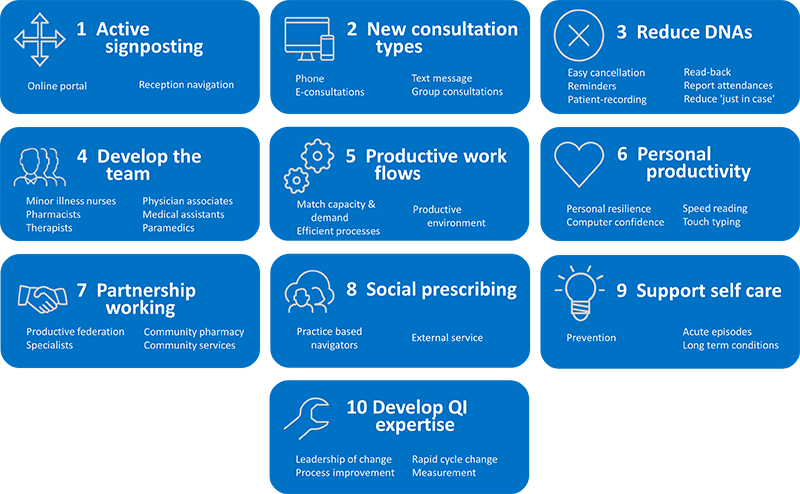DNAs are undoubtedly a big problem for GP practices. More than 10 million GP appointments are lost to DNAs each year, according to the GPC, while surveys conducted by the likes of GPonline suggest the figure could be as high as 14 million.
While DNAs can have positives – some practitioners argue that a DNA may provide a welcome opportunity to catch up, write notes or take a quick comfort break – the scale of the problem, allied to the acute GP shortage, is a significant problem. At a time when many patients are struggling to get an appointment, the fact that so many patients forget or don’t go when they have made an appointment means others can’t go. It has a big impact on practices.
Successful solutions
Given the need to enhance access to appointments, what measures can practices take to reduce no-shows?
It’s a topic that has been covered in detail before on Practice Index. For example, this blog explored how DNAs can be tackled with nothing more than a box of Krispy Kremes and some creative thinking. It’s also a topic that was number three in the NHS’ Releasing Capacity in General Practice list of 10 High Impact Actions.
That NHS study highlighted how non-attendance is a complex issue, that there are different reasons why patients fail to keep appointments, and that they are influenced by demographic, administrative and relational factors. It therefore suggests implementing a number of the following initiatives:
1. Easy cancellation: Rapid access is provided for patients who wish to contact the practice to cancel an appointment. Common approaches include having a dedicated phone number, a text message service and online cancellation functionality.
2. Appointment reminders: Patients are sent a text message to remind them about a forthcoming appointment. A reminder is included about how to cancel the appointment if it is no longer wanted. This can reduce DNAs by up to 10%.
3. Patient-recorded bookings: Patients are supported to write their own appointment card for their next appointment, rather than having it done for them. This encourages recall and is shown to reduce DNAs by 18%.
4. Read-back: The patient is asked to repeat the details of the appointment back, to check they have remembered it correctly. On its own, this has been shown to reduce DNAs by 4%.
5. Report attendances: The practice publishes information, for example in the practice waiting room, about the proportion of patients who do keep their appointment, with an encouragement to cancel unwanted appointments. On its own this has been shown to reduce DNAs by 14%.
6. Reduce ‘just in case’ booking: Creating an appointment system and booking experience which is straightforward and responsive, giving patients confidence that they will be able to obtain help when they need it. This can reduce booking of appointments a long way in advance, which is associated with a much higher DNA rate. Practices who have changed to a demand-led appointment system have had an 80% reduction in DNAs. Practices in the Modality Partnership in Birmingham, for example, introduced same-day telephone appointments and saw a reduction of 72%.
Combine efforts
While all of the above solutions will work in isolation, the NHS suggests that combining efforts produces the best results. For example, combining innovations 4, 5 and 6 has been shown to reduce DNAs by 32% – a very welcome result for any practice.
For patient-recorded bookings and read-back, hold a short training session with staff, the NHS suggests that it’s worth explaining the reason for this change and the evidence behind it. Give them an opportunity to practice asking someone to read back the information about an appointment (it usually feels unnatural at first). For reporting attendance, most experts believe it is important to ensure the information is kept up to date. Try putting information on the practice website as well as in the waiting room.
Utilise marketing
Practices can also benefit from local CCG initiatives to reduce DNAs and general wastage in primary care. One example is a campaign carried out in Essex.
Information collected by five CCGs across mid and south Essex showed that across 44 practices in Basildon and Brentwood, 450 hours of GP appointment time was wasted per month.
Across 49 GP practices in Mid Essex CCG, 240 appointments were missed in a single day. In Thurrock, 2,900 GP appointments were missed across 35 practices in the month of December 2016, while 500 were missed in a week at the 25 practices in Castle Point and Rochford CCG and further appointments were missed in Southend.
The five CCGs estimate that across their combined patch, 12,000 GP appointments are missed each month because patients fail to attend – equivalent to 3.5% of the total number of appointments available.
Prompted by this, the CCGs launched a marketing campaign starring local residents that aimed to help reduce waste in the NHS and raise awareness of what patients themselves can do to help the NHS to deliver effective services.
Join the discussion on the Practice Index forum on your hints and tips for actions to success.





0 Comments